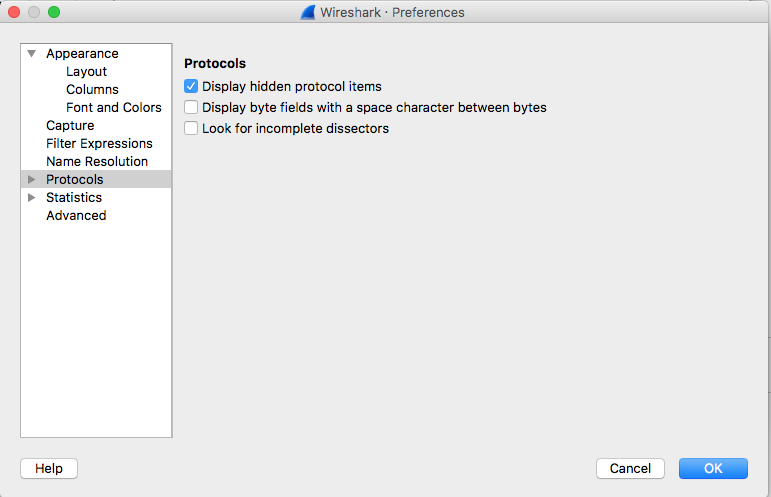|
Check out these great references as well: |
| Our custom profiles repository for Wireshark |
| Our Udemy course on Wireshark |
| Our Udemy course on Wireless Packet capture |
Great question, and one I get all the time.
As most of you know, the manufacturer of a networking device that uses MAC addressing can be identified by the OUI – Organizationally Unique Identifier. OUI’s are obtained from the IEEE. You can find a complete list here. The OUI is essentially the first 24 bits of the MAC address field (it is actually 22 bits – detail details).
The problem with the question is that Apple for example may have dozens or hundreds of OUI’s.
Luckily, Wireshark can perform number name resolution for MAC addresses. We see this in the packet dissection:

If we right click on the source MAC address field and select Apply as a filter, we get the following syntax:
![]()
So the first 3 bytes (3c:07:54) must be an Apple OUI.
If we modify the filter to this, trying to get all systems that have the OUI:
![]()
We have several problems. First, any Ethernet MAC above this range will be included, but more importantly we have not considered all the other Apple OUI’s.
Another coice would be to use “Apple”:
![]()
But we can see that Wireshark’s display filter mechanism does not accept that syntax.
The solution is to use a “hidden” protocol field that the Wireshark Expert actually has for MAC addresses. It is called the ‘eth.addr_resolved’ field. Further, instead of using the ‘>=’ operator we need to use the ‘contains’ operator, thus if the MAC address of any packet is resolved from the large number of OUI’s to be ‘Apple’ we have found all the Apple based traffic. Here it is:
![]()
There is your answer. Hope that helps.
If you are interested in exploring other Wireshark Expert hidden fields, on a MAC click Wireshark> Preferences> Protocols, and on a Windows machine click Edit> Preferences> Protocols and then select the ‘Display hidden protocol items’:

This does not need to be on for the filter above to work. But one can imagine using these hidden fields to expand contents of your Profiles and filters.
I hope you find this article and its content helpful. Comments are welcomed below. If you would like to see more articles like this, please support us by clicking the patron link where you will receive free bonus access to courses and more, or simply buying us a cup of coffee!, and all comments are welcome!

